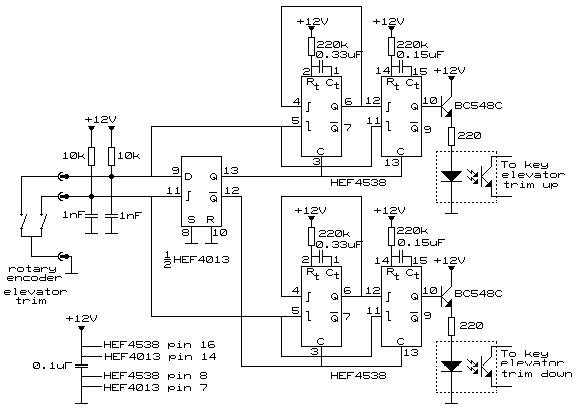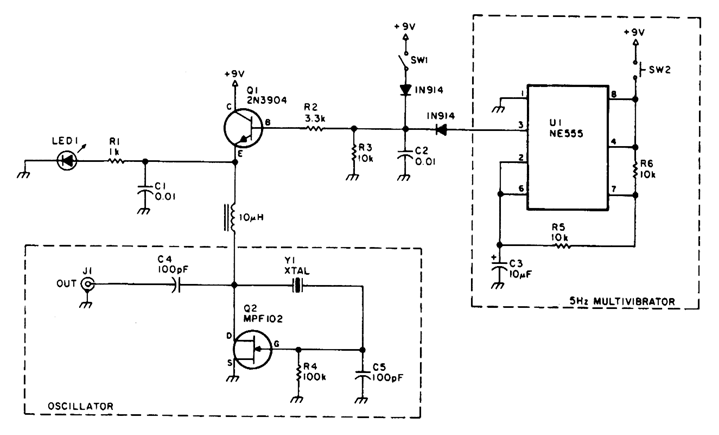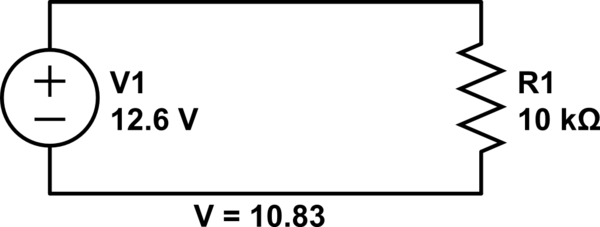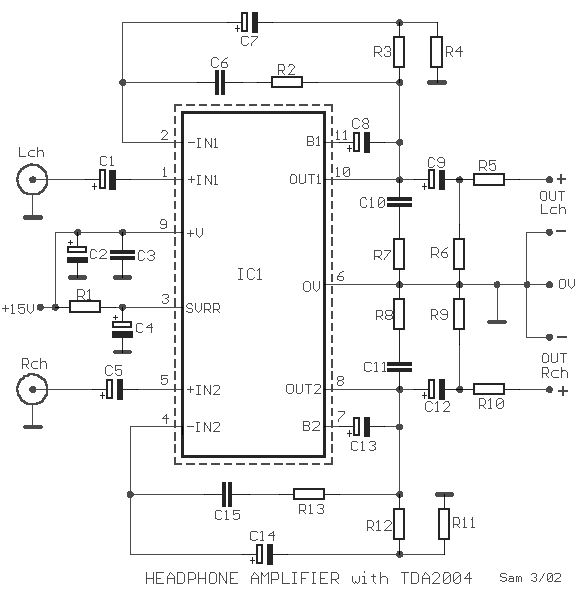
crystal base oscillator circuit
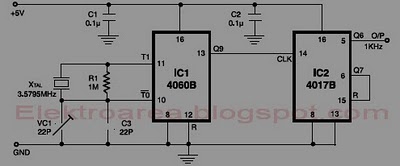
This circuit is designed for accurate time-base generation utilizing the commonly available 3.5795 MHz crystal, which is frequently used in telecommunication equipment. A crystal-based oscillator combined with a divider IC chain or a similar circuit, such as an ASIC, is employed for time-base generation. The 3.5795 MHz crystal operates in conjunction with a CD4060-based crystal oscillator cum-divider (IC1). The frequency of the crystal is divided by 512 by IC1, and then further divided by 7 using the CD4017 (IC2). IC2 is reset immediately after its Q7 output goes high, resulting in a final output frequency of approximately 998.8 Hz after dividing the crystal frequency by 3584. This frequency can be precisely adjusted to 1 kHz using a trimmer capacitor (VC1) as illustrated in the accompanying figure. The 1 kHz signal can subsequently be divided using decade counters to generate the desired time period.
The circuit utilizes a 3.5795 MHz crystal oscillator, which provides a stable frequency source. The CD4060 IC serves as both the oscillator and frequency divider, allowing for an efficient means of generating a lower frequency signal from the high-frequency crystal. The operation begins with the crystal oscillating at its fundamental frequency, which is then fed into the CD4060. The internal divider of the CD4060 reduces the frequency by a factor of 512, producing a signal at approximately 6.976 kHz.
Following this, the output from the CD4060 is connected to the CD4017 decade counter, which further divides the frequency by 7. The CD4017 is a popular decade counter that can drive ten outputs in sequence. Once the Q7 output of the CD4017 goes high, it triggers a reset, ensuring that the division process is cyclical and controlled. The result of these divisions is a frequency output of about 998.8 Hz.
To achieve an exact 1 kHz output, a trimmer capacitor (VC1) is incorporated into the circuit. This allows for fine-tuning of the output frequency, accommodating any variations in the crystal frequency or component tolerances. Once the 1 kHz signal is established, it can be further processed through additional decade counters for generating various time periods, making this circuit versatile for applications requiring precise timing signals.
The schematic representation of this circuit would include connections from the crystal to the CD4060, followed by the output leading to the CD4017. The trimmer capacitor would be shown connected to the output stage, allowing for frequency adjustments. Proper power supply connections and grounding must also be indicated to ensure the circuit operates reliably. Overall, this design provides a robust solution for generating accurate time-base signals suitable for a variety of electronic applications.This is circuit for accurate time-base generation using the readily available 3. 5795MHz crystal commonly used in telecommunication equipment. Crystal-based oscillator with divider IC chain or a similar circuit in the form of an ASIC is used for time-base generation. The 3. 5795MHz crystal is used in conjunction with a CD4060-based crystal oscillato r- cum-divider (IC1). The crystal frequency is divided by 512 by IC1, which is further divided by 7 by CD4017 (IC2). IC2 is reset as soon as its Q7 output goes high. Thus the crystal frequency is divided by 3584, giving the final output frequency of around 998. 8 Hz. This frequency can be trimmed to exactly 1 kHz with the help of trimmer capacitor VC1 as shown in the figure. The 1kHz signal can be further divided using decade counters to generate the required time period. EFY lab note. 🔗 External reference
The circuit utilizes a 3.5795 MHz crystal oscillator, which provides a stable frequency source. The CD4060 IC serves as both the oscillator and frequency divider, allowing for an efficient means of generating a lower frequency signal from the high-frequency crystal. The operation begins with the crystal oscillating at its fundamental frequency, which is then fed into the CD4060. The internal divider of the CD4060 reduces the frequency by a factor of 512, producing a signal at approximately 6.976 kHz.
Following this, the output from the CD4060 is connected to the CD4017 decade counter, which further divides the frequency by 7. The CD4017 is a popular decade counter that can drive ten outputs in sequence. Once the Q7 output of the CD4017 goes high, it triggers a reset, ensuring that the division process is cyclical and controlled. The result of these divisions is a frequency output of about 998.8 Hz.
To achieve an exact 1 kHz output, a trimmer capacitor (VC1) is incorporated into the circuit. This allows for fine-tuning of the output frequency, accommodating any variations in the crystal frequency or component tolerances. Once the 1 kHz signal is established, it can be further processed through additional decade counters for generating various time periods, making this circuit versatile for applications requiring precise timing signals.
The schematic representation of this circuit would include connections from the crystal to the CD4060, followed by the output leading to the CD4017. The trimmer capacitor would be shown connected to the output stage, allowing for frequency adjustments. Proper power supply connections and grounding must also be indicated to ensure the circuit operates reliably. Overall, this design provides a robust solution for generating accurate time-base signals suitable for a variety of electronic applications.This is circuit for accurate time-base generation using the readily available 3. 5795MHz crystal commonly used in telecommunication equipment. Crystal-based oscillator with divider IC chain or a similar circuit in the form of an ASIC is used for time-base generation. The 3. 5795MHz crystal is used in conjunction with a CD4060-based crystal oscillato r- cum-divider (IC1). The crystal frequency is divided by 512 by IC1, which is further divided by 7 by CD4017 (IC2). IC2 is reset as soon as its Q7 output goes high. Thus the crystal frequency is divided by 3584, giving the final output frequency of around 998. 8 Hz. This frequency can be trimmed to exactly 1 kHz with the help of trimmer capacitor VC1 as shown in the figure. The 1kHz signal can be further divided using decade counters to generate the required time period. EFY lab note. 🔗 External reference
